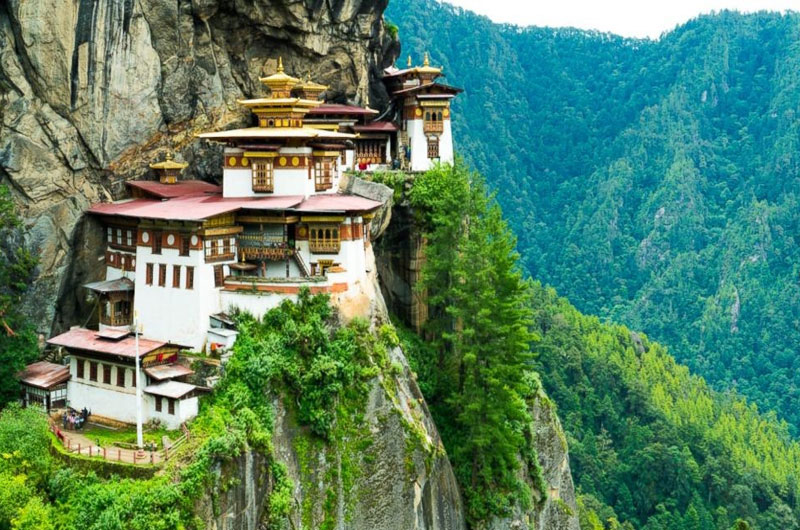
Thimphu: The Heartbeat of Bhutan
Thimphu, the capital city of Bhutan, is a mesmerizing blend of tradition and modernity. Nestled in the western part of the country, this vibrant city is the political, economic, and cultural hub of Bhutan. With its unique blend of ancient monasteries, bustling markets, and serene landscapes, Thimphu offers a captivating experience for every traveler. This guide delves into Thimphu’s tourism specialties, nearby attractions, historical significance, best times to visit, and top restaurants and hotels for an unforgettable stay.
Tourism Specialty and Locality
The Unique Charm of Thimphu
Thimphu stands out for its harmonious blend of traditional Bhutanese culture and contemporary lifestyle. It is the only capital in the world without traffic lights, reflecting the city’s commitment to preserving its unique heritage.
- Cultural Richness: Thimphu is home to several cultural landmarks, including the majestic Tashichho Dzong, the Buddha Dordenma statue, and numerous temples and monasteries that offer a deep insight into Bhutanese spirituality and architecture.
- Vibrant Markets: The city’s markets, especially the weekend market, are brimming with local crafts, textiles, and produce, providing a vivid glimpse into the everyday life of the Bhutanese people.
- Scenic Beauty: Surrounded by forested hills and the Wang Chhu River, Thimphu offers breathtaking natural beauty and numerous trekking and hiking opportunities.
Nearby Tourist Spots
Exploring the Environs of Thimphu
Thimphu’s strategic location makes it a perfect base for exploring other enchanting destinations in Bhutan.
- Paro: Located about 50 km from Thimphu, Paro is home to the iconic Taktsang Monastery (Tiger’s Nest), one of Bhutan’s most famous landmarks. Paro’s picturesque valley, ancient temples, and the National Museum offer rich cultural and historical experiences.
- Punakha: Around 85 km from Thimphu, Punakha is known for the stunning Punakha Dzong, considered one of Bhutan’s most beautiful fortresses. The town’s pleasant climate, lush rice fields, and the confluence of the Pho Chhu and Mo Chhu rivers make it a must-visit.
- Dochula Pass: En route to Punakha, about 30 km from Thimphu, Dochula Pass offers panoramic views of the Himalayas. The pass is adorned with 108 memorial chortens and is a popular stop for tourists to enjoy the breathtaking scenery.
History of Thimphu
A Glimpse into Thimphu’s Rich Past
Thimphu’s history is deeply intertwined with Bhutan’s monarchical and spiritual heritage.
- Historical Significance: Thimphu became the capital of Bhutan in 1961, replacing Punakha. The city has grown significantly since then, evolving from a small village into the bustling capital it is today.
- Cultural Heritage: The city is home to numerous dzongs (fortresses) and monasteries that date back centuries. Tashichho Dzong, the seat of Bhutan’s government and the summer residence of the central monastic body, is a prime example of traditional Bhutanese architecture.
Best Time to Visit
Seasons and Weather in Thimphu
Thimphu is a year-round destination, with each season offering a unique experience for visitors.
- Spring (March to May): Spring is one of the best times to visit Thimphu, with temperatures ranging from 5°C to 25°C. The blooming rhododendrons and lush greenery make this season perfect for sightseeing and outdoor activities.
- Summer (June to August): Summers are warm and humid, with temperatures ranging from 15°C to 30°C. The monsoon rains bring freshness to the landscape, but some outdoor activities may be restricted due to the weather.
- Autumn (September to November): Autumn is another ideal time to visit Thimphu, with clear skies and pleasant temperatures ranging from 10°C to 20°C. The vibrant festivals, including the famous Thimphu Tshechu, make this season a cultural delight.
- Winter (December to February): Winters are cold, with temperatures dropping to as low as -2°C. The city occasionally experiences snowfall, adding a magical charm to the landscape. This is a great time for those who enjoy the serene beauty of snow-clad mountains.
Nearby Restaurants and Hotels
Dining and Accommodation Options in Thimphu
Thimphu offers a variety of dining and lodging options to cater to different tastes and budgets.
Top Restaurants
- Folk Heritage Museum Restaurant: Located within the Folk Heritage Museum premises, this restaurant offers an authentic Bhutanese dining experience with traditional dishes served in a traditional setting.
- Ambient Café: A popular spot among locals and tourists, Ambient Café offers a variety of coffee, teas, and light meals. The cozy ambiance and beautiful views of the city make it a great place to relax.
- Seasons Restaurant: Known for its Italian cuisine, Seasons Restaurant offers a range of delicious pizzas, pastas, and salads. The elegant setting and warm hospitality make it a must-visit.
Best Hotels
- Taj Tashi: A luxurious hotel blending Bhutanese tradition with modern comforts, Taj Tashi offers well-appointed rooms, fine dining options, and a spa. The hotel’s central location makes it convenient for exploring the city.
- Le Méridien Thimphu: This upscale hotel provides contemporary accommodations with excellent amenities. Le Méridien’s central location and stunning views make it a favorite among travelers.
- Hotel Norbuling: Known for its comfortable rooms and friendly service, Hotel Norbuling offers a cozy stay with easy access to Thimphu’s main attractions. The hotel’s restaurant serves a variety of Bhutanese and international dishes.
Conclusion
Thimphu, with its unique blend of tradition and modernity, offers an enchanting experience for every traveler. Whether you’re exploring ancient monasteries, delving into vibrant markets, or simply soaking in the serene beauty of the Himalayas, Thimphu provides a perfect balance of cultural richness and natural splendor. Its blend of historical charm, cultural heritage, and modern comforts makes it an ideal destination for those seeking to immerse themselves in the tranquility and mystique of Bhutan. Plan your visit to Thimphu and discover the heart and soul of this Himalayan kingdom, where every moment is a step closer to nature, tradition, and adventure.
